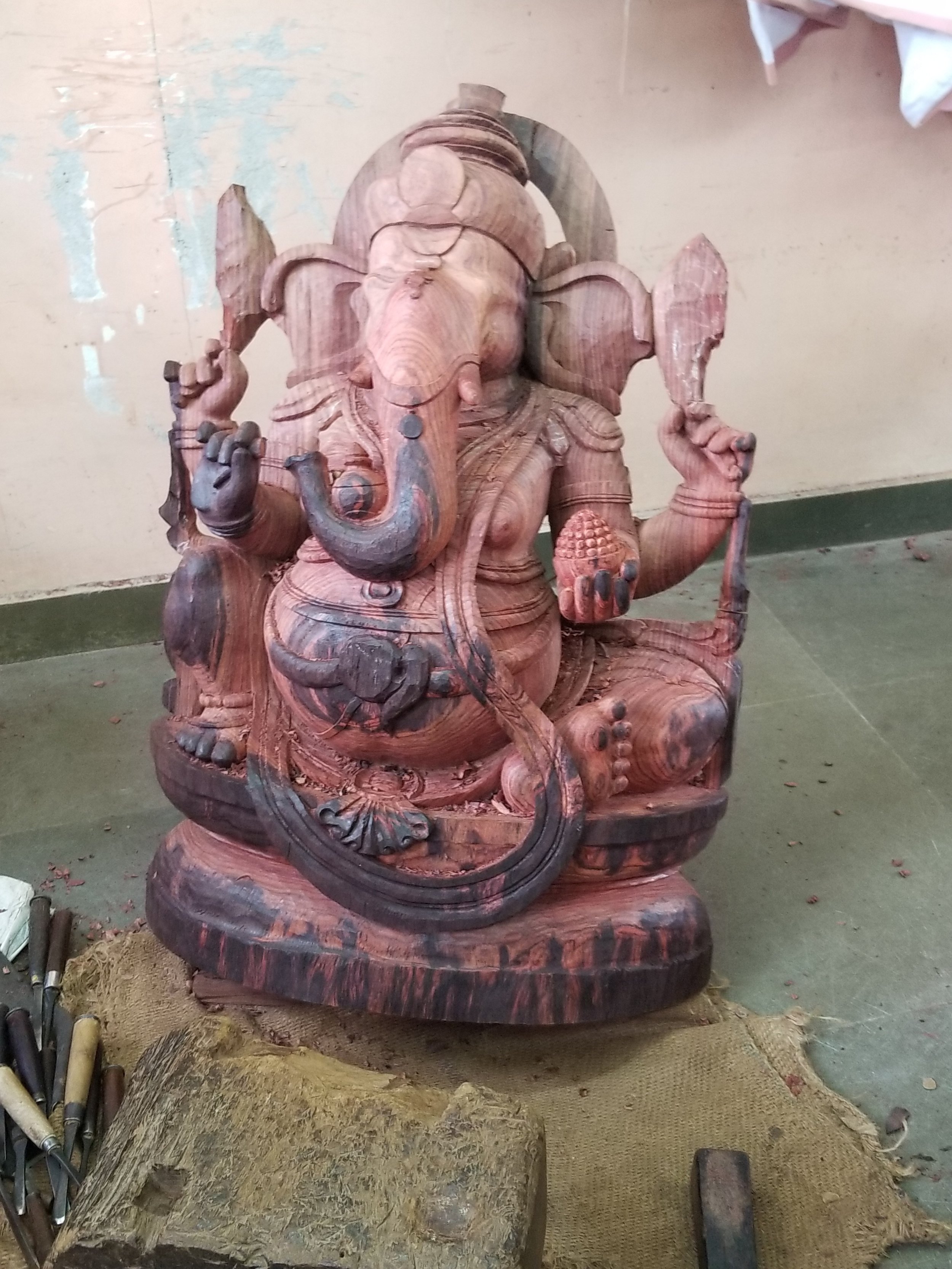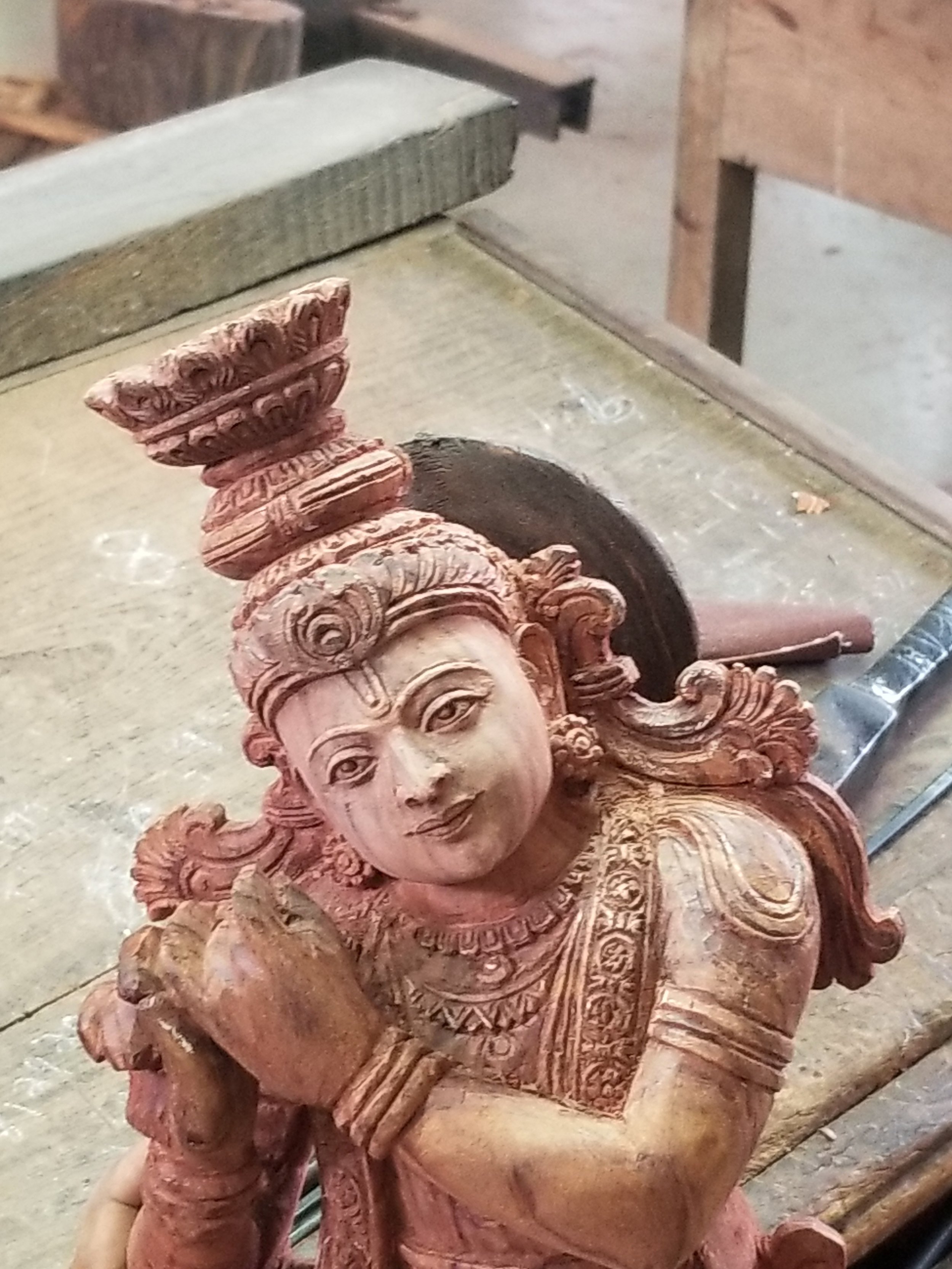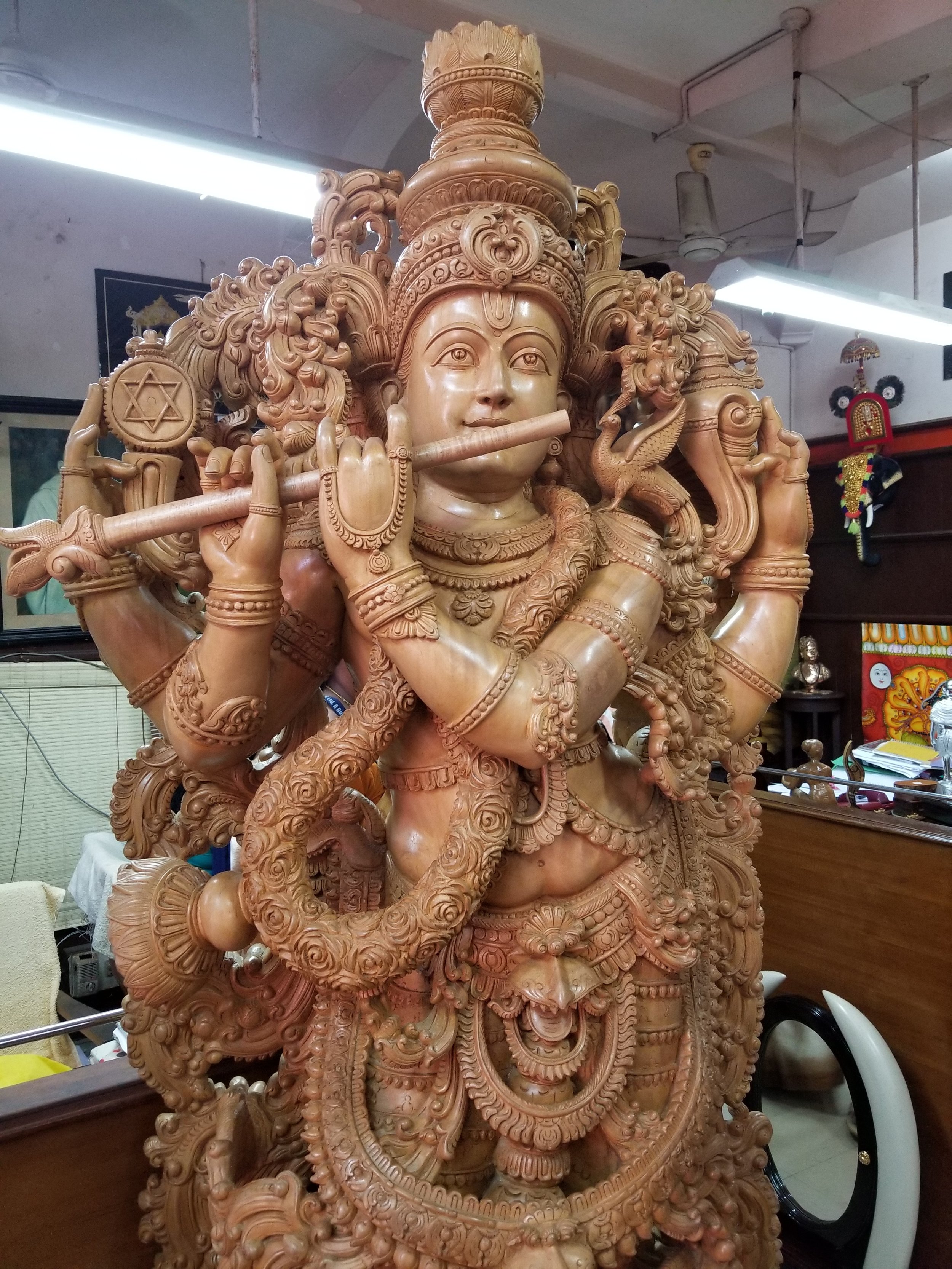For our next adventure we took a 1 hour flight south from Bangalore to Thiruvananthapuram (aka, Trivandrum), the capital of the state of Kerala. Since June is monsoon season we were hit with a little rain (which I relished after the past week of sweating). It rains here as much as Portland yet people here have learned to drive in the rain.
In looking into interesting artisans to profile, we discovered that the government of Kerala regulates their handicrafts quite closely to ensure quality and authenticity. Knowing this, my friend sent a written request to the government agency weeks ago for us to view the process and meet the craftsmen but received a non-committal reply. He followed up with repeated phone calls which were met with equally non-committal responses. So we showed up at one of the government-run showrooms and asked to speak directly to the managing director since he alone could grant us permission. We waited about an hour and I guess they realized we were serious. After speaking to layer after layer of management we were finally presented to this very important man. He asked us a few questions, stared at us for what seemed like an eternity over the rim of his glasses until ultimately granting permission. I have no idea what we did or didn't say to convince him. Maybe he just wanted the sweaty American lady out of his office.
The "manufacturing unit" we visited houses woodcutters, brass workers, apprentice and master woodcarvers. The process begins with cutting the chosen wood down to the size needed. This unit works in white pine, rosewood, and sandalwood. In this case they are cutting a block of rosewood.
The workshops are busy and loud but each artisan pays close attention to detail. The facility we visited was carving Hindu gods out of rosewood. There are varying degrees of skill amongst these men, with the master craftsmen being able to actually sit in chairs at a workbench rather than the floor.
This artist is working on a Ganesh, the god of new beginnings, success, and wisdom. You may recognize him, his elephant form is quite popular.
The chalk outline helps guide them as they carve each piece freehand.
Seeing this master work on the intricacies of carving Krishna was a thrill. His dexterity and precision was very satisfying to watch.
Krishna is the god of compassion, tenderness, and love in Hinduism. I really think this artist is able to convey those qualities, simply through his expression.
One of his completed Krishnas, made from white pine is coming home with me.
The workmanship, patience, and skill impressed me. They spend days, sometimes weeks on a single piece and when you see the sheer amount of these carved gods in the marketplaces, it makes you understand why the government has regulated the handicraft industry so closely. This provides a steady income for the artists while also supporting the community through the tourism economy.
I don't consider myself very religious but I do love the iconography. From my travels I have collected items from Catholicism, Christianity, Islam, Hinduism, Buddhism, Romanian Orthodoxy, and more. I find the icons beautiful and comforting. Seeing the care these craftsmen put into creating them makes them even more special. If you are a lover of Hindu gods and would like me to find an interesting piece for you, please let me know.
In my own home, I have Ganesh featured prominently on my mantle because I'm just really taken with him and what he represents. He is the remover of obstacles and the god of wisdom. And he makes me smile.








